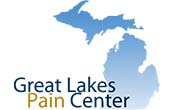Osteoporosis is a disease in which bone mass decreases. Osteoporosis literally means “porous bone” because the bones have less substance and are less dense. As bone mass decreases, susceptibility to fractures increases. A fall, a blow or lifting a heavy object that would normally not strain us, can easily cause a broken bone in somebody with osteoporosis. The spine, the wrist and the hip are the most common sites for osteoporosis fractures. This disorder is particularly common in females. It affects more than half of the women over the age of 45 and over 90 percent of women over the age of 75. It has been called the silent disease because it begins without symptoms when we are much younger. Osteoporosis is six to eight times more common in women than in men. There are a number of risk factors for osteoporosis:
- Female gender
- Post menopausal women
- Early menopause before age 45
- White, Caucasian or Asian
- Low calcium intake
- Lake of physical exercisse
- Family history of osteoporosis
- Cigarette smoking
- Excessive use of alcohol
The symptoms of osteoporosis prior to a bone fracture are:
- Occasional back pain
- Loss of height or curvature of the upper back
Treatment
The doctor may prescribe estrogen replacement after menopause for women who are at risk for osteoporosis. Menopause occurs naturally in most women by the age of 50, or earlier if the ovaries have been removed by surgery. Estrogen reduces the amount of calcium taken out of the bone and slows or halts postmenopausal bone loss. It cannot, however, restore bone mass to pre-menopausal levels. Once osteoporosis develops there are drugs that may be beneficial to slow bone breakdown. Your doctor can help you develop a program that will best treat and prevent further osteoporosis.
Prevention
- Avoid smoking
- Calcium intake between 1,000 – 1,500 mg/day
- Proper strength training
- Regular proper physical activity
- Moderate to no alcohol consumption




